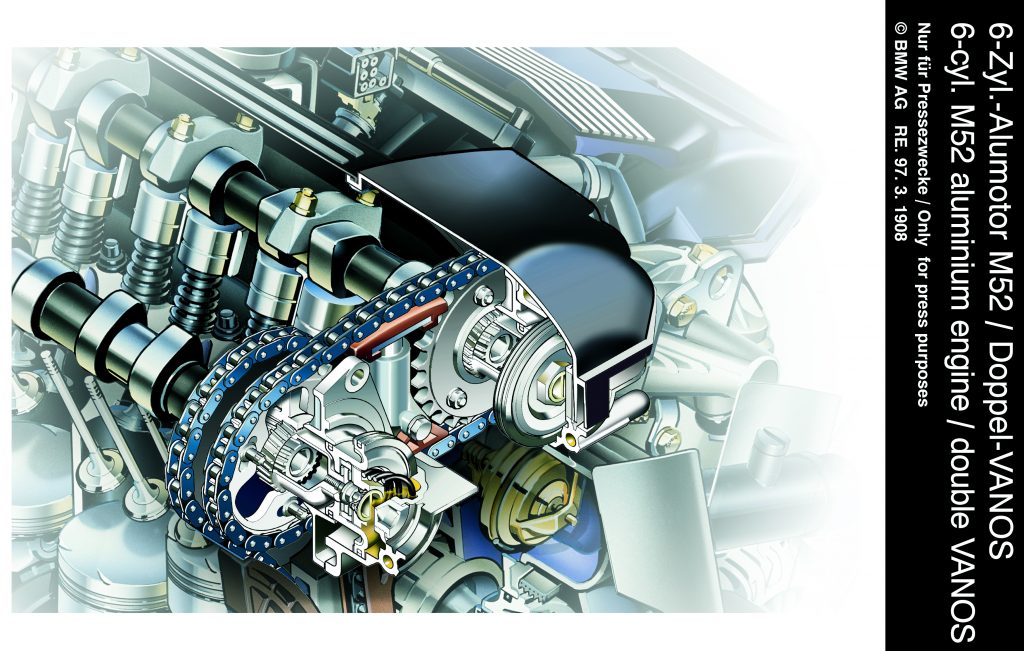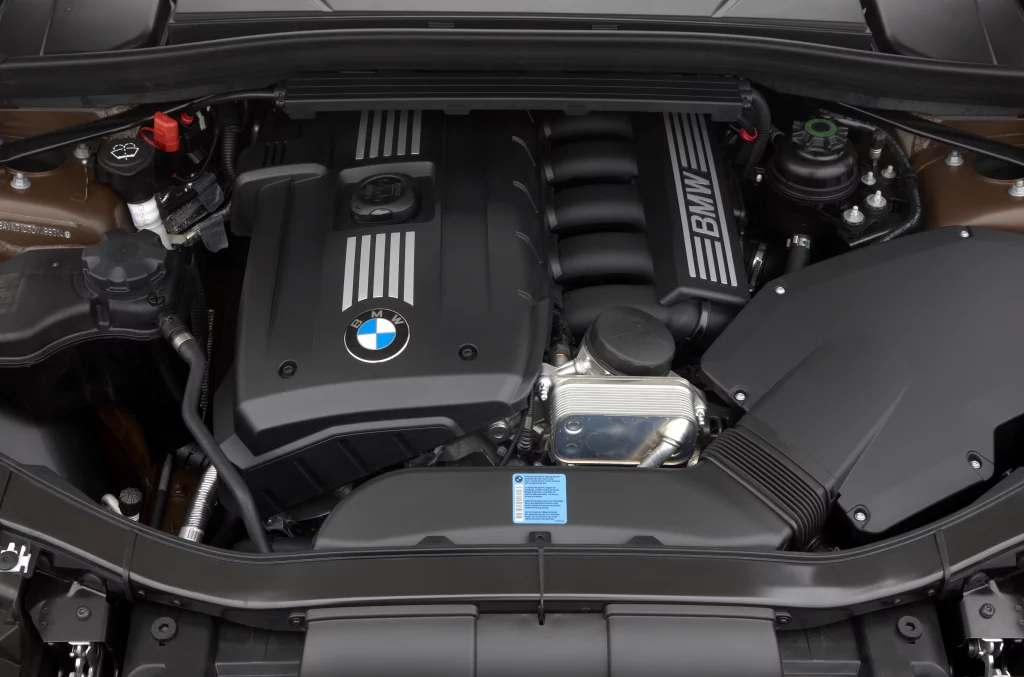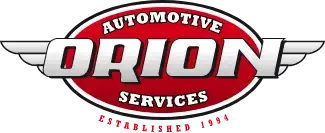6 Common VANOS Issues on BMW Engines
In the early days of engine tuning, hobbyists and racers would switch the camshafts in their motors to gain power. They had the choice of an aggressive cam profile for power or a more normal profile for fuel economy and reliability.
Switching out the cams in these cars became a popular way to make your car torquey with low-end power built for acceleration and street driving, or a high-end focused horsepower-pushing car made for racing. The problem is, the general consumer missed out on these benefits, as switching cams was beyond the ability of the average car owner.
Variable Valve Timing
Variable valve timing (VVT) is the automakers’ solution to this.
Many modern vehicles employ technologies that accomplish the same effect as changing cams, all without having to touch the engine. Variable valve timing systems benefit performance but have a significant impact on fuel efficiency and overall driveability. BMW’s variable valve timing system, called VANOS, has been used in BMW models ranging from luxury commuters to high-performance M models since the early 1990s.
While VANOS improves many aspects of engine performance, the added complexity of the system means there are more opportunities for things to go wrong. Keep reading to learn about six common VANOS problems on BMW engines.
History of the VANOS System
Introduced in 1992, VANOS was BMW’s foray into variable valve timing, a technology that allows the car to dynamically change the timing of the intake or exhaust valves based on RPM. This means the motor essentially operates two cams (accomplishing the same thing early hot-rodders did by changing out a camshaft). Driven by oil pressure, the change in cam phasing is made depending on the engine RPM, allowing it to be optimized for performance and efficiency no matter the conditions you are driving in.
VANOS was not the first variable valve timing system, with Honda’s VTEC system debuting in the 1989 Integra. Other systems such as Toyota’s VVT-i and Ford’s VCT quickly followed suit.
Every variable timing system operates on the same principle. Fuel efficiency and better reliability in the low rev range when you want it, and optimal power delivery in the higher RPM range. The best of both worlds if you will.
How VANOS Works
VANOS works by adjusting valve timing with cam phasing.
In the VANOS system, a helical gear inside of the cam gear is directed either towards or away from the camshaft by a piston, which is driven by oil pressure directed by a solenoid. As the helical gear is adjusted, the “lobe angle” of the cam changes.
Lobe Angle
Changes in lobe angle allow the valves to remain open for more or less time. The longer they stay open, the more air is added, and the more power is produced. Changing the duration of time the valves are open or closed has a direct impact on fuel economy and engine performance.
ECU and DME
The helical gear and the way it’s controlled is what makes VANOS different from its counterparts. The ECU and its accompanying Digital Motor Electronics (DME) read the engine RPM, load, and camshaft position. With this information, the DME tells the VANOS solenoid what to do.
VANOS Uses Oil Pressure to Control Cam Phasing
The DME sends a signal to the VANOS solenoid to alter oil pressure. The solenoid directs oil pressure behind the piston and causes it to extend, moving the helical gear to the ECU’s desired position.

Different Types of VANOS
VANOS is an umbrella term for any variable valve timing system made by BMW. There have been multiple variations in the VANOS systems over the years. Some engines have single VANOS, while others have double. Newer VANOS systems also incorporate another BMW technology called Valvetronic.
Single VANOS is as basic as it gets for BMW variable valve timing. The system only controls the intake of air into the cylinder. Single VANOS is seen on BMW models from 1992 to 2002, so the system is considered the “original” VANOS.
Double VANOS not only controls the intake of air but also the exhaust. This iteration was introduced in the US in 1999 and saw a greater increase in power at the high end and fuel efficiency at the low end of the rev range compared to its single counterpart.
Since 2004, BMW has offered double VANOS systems coupled with Valvetronic. Rather than controlling the duration of the valves being open, it controls how far open they are. This technology even further increases the benefits of VANOS.
Each variation of VANOS has unique issues and flaws, but multiple common issues seem to reach most, if not all, variations of the VANOS system.

Common Symptoms of VANOS Failure
- Sluggish acceleration
- Limp mode
- Check engine light
- Rough idle
- Rattling noise
Common VANOS Issues
VANOS Solenoid Failure
The solenoid is responsible for controlling the oil pressure used to move the helical gear. These small parts have been known to fail, either through o-ring failure or becoming clogged with dirt and debris. Any component that has direct contact with oil runs the risk of becoming clogged and caked with debris.
Rubber or rubber-like materials used in engines can and will wear down with use. The o-ring that creates a seal within the VANOS solenoid is no exception. Through degradation from dirty oil or wear and tear, the ring will eventually fail. Due to this, the solenoid will no longer be able to regulate the flow of oil.
The solenoid itself can often become clogged. Also a common product of contaminated oil, solenoid clogging disrupts its ability to control oil pressure.
Symptoms of VANOS solenoid failure can include sluggish acceleration, loss of power, limp mode, check engine lights, and a rough idle.
The best way to avoid o-ring failure is to simply replace it after every 50,000 miles as BMW recommends. Running dirty or contaminated oil will also increase the likelihood that the solenoid can become clogged or the o-ring will degrade, so frequent oil changes are important for the health of your VANOS system.
VANOS Rattle
VANOS rattle is a dreaded issue among BMW owners. With consistent use and long periods with little or no maintenance, parts within the VANOS system begin to wear down and become loose.
The problem with diagnosing where the rattle is coming from is that the system has so many different moving parts. Each part has a possibility of becoming loose and causing the issue.
There are a few spots where the rattle is most often seen, such as between the cam gear and the VANOS shaft. With repeat use and wear, play can develop between the two parts and cause a metallic rattle sound.
Even the parts within the VANOS solenoid and piston itself can cause rattling if one becomes loose enough.
The rattle is easy to notice, sounding like shaking a box of nails. It usually develops on higher mileage motors, but it’s hard to pinpoint an exact mileage.
It may be annoying, but the bright side is that VANOS rattle doesn’t usually mean anything more than a noise you’ll have to deal with. In most cases, the problem causing the sound won’t affect power or efficiency.
Regular service can prevent VANOS from rattling for a long time, but it seems to be almost inevitable on older models. If you do notice rattling, it’s a good idea to bring your vehicle to a professional for an inspection, even if just to ensure the issue doesn’t go further than an annoying sound.
Clogged Oil Feed Lines
Since VANOS is reliant on a supply of oil to actuate the helical gear, it needs a path from which to draw the oil.
As oil is used, it picks up dirt and debris, as well as changes in viscosity. Due to the oil becoming thicker and less able to flow from one place to another, oil sludge can cause the oil lines feeding the VANOS system to become partially or completely clogged.
As you might imagine, this disrupts the system’s ability to carry out the ECU’s instructions and causes a whole host of problems.
Clogged oil lines can cause symptoms similar to a bad VANOS solenoid. Sluggish acceleration, trouble starting or holding idle, limp mode, and engine fault lights are all to be expected with clogged lines.
Luckily, it’s a fairly easy problem to avoid. Consistent fresh oil heavily decreases the odds of clogging your lines, as the oil doesn’t have time to thicken up into the sludge-like fluid that causes the issue.
Skipping oil changes is a bad idea in the first place, but for BMW owners, this just adds another exclamation mark on how important consistent service can be.
Bad Camshaft Position Sensor
While not technically part of the VANOS system, the camshaft position sensor is vitally important to the function of the whole vehicle and especially VANOS.
The ECU and DME pull their data from multiple sensors, one being the camshaft position sensor. Without this information, the computer is unable to provide an accurate decision on the cam gear angle.
A bad camshaft position sensor will disable the function of VANOS entirely, and the car would experience multiple other issues.
Symptoms of a bad camshaft position sensor can include poor acceleration, limp mode, stalling, or the vehicle not starting at all.
The sensor is built to last as long as the car does, but in some cases, the sensor will fail with age or manufacturer error.
VANOS Service at Orion Automotive
If you own a BMW and notice any symptoms similar to these, bringing your car to a professional is vital to keeping your vehicle on the road.
Orion Automotive in Ann Arbor is your premier place for VANOS service in Michigan! Call or schedule an appointment online today to meet with our friendly team and experienced technicians.

